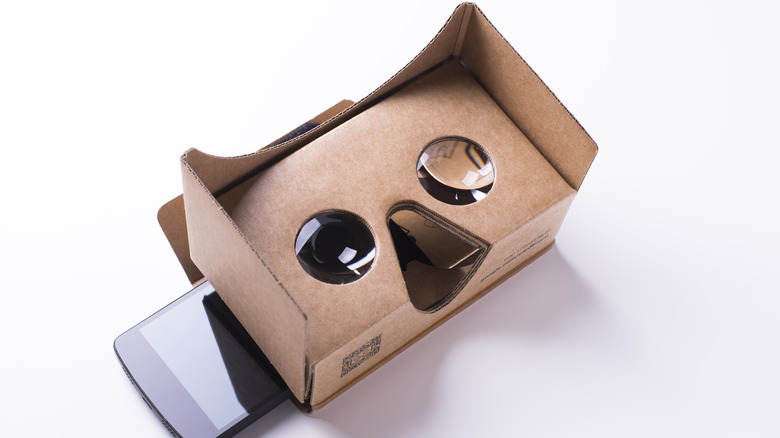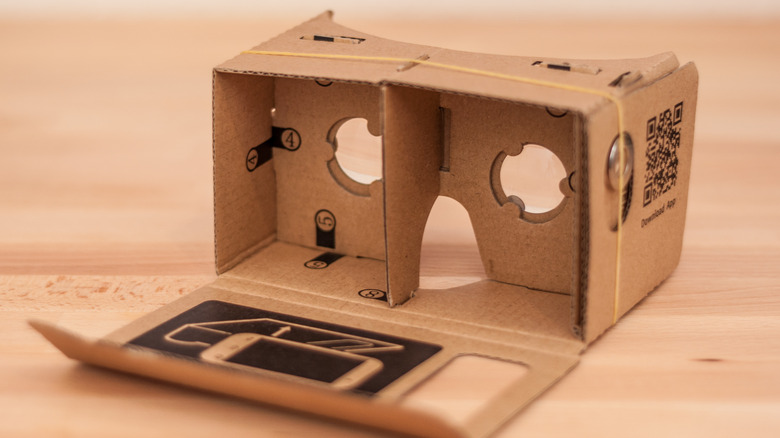
Misszin/Getty Images
Since its founding in 1998, Google has remained at the forefront of technological innovation. Though it had humble beginnings as a search engine, it has since grown massively into everything from a navigational tool to a web browser with its highly unique Google Chrome, to an office suite and cell phones too. Of course, along the way, several Google products faded into obscurity, amounting to a lengthy list of misfires. One of the most interesting is the virtual reality platform Google Cardboard, which launched in 2014 only to be discontinued in 2021.
Google Cardboard was a rather simple product designed to make the fun of VR as accessible as possible. The setup features a cardboard headset with glass lenses within it. In the front is a slot to place your smartphone, so you could watch YouTube, play VR-enhanced games, explore immersive VR-enabled maps, and more. When the headsets were available at retail, they cost a mere $15, making Cardboard a cost-effective alternative to other emerging VR products of the time.
So, what was the reason Google took it off the market and ended support for its accompanying software? Simply put, interest in the product diminished. Despite shipping approximately 15 million Cardboard units around the world, usage numbers dropped off dramatically. Not to mention VR as a whole has struggled to find a strong mainstream following since its biggest push in the 2010s, with Cardboard’s successor — Google Daydream — only lasting from 2016 to 2019. Thankfully, for those who already have it or are hoping to try out Cardboard, all hope isn’t lost.
Google Cardboard remains somewhat accessible years after its official demise

Alexandrews/Getty Images
Even though Google put an end to Cardboard VR in 2021, it’s not impossible to try it out. In 2019, the company announced that it was open sourcing the Google Cardboard software development kit. «While we’ve seen overall usage of Cardboard decline over time and we’re no longer actively developing the Google VR SDK, we still see consistent usage around entertainment and education experiences … and want to ensure that Cardboard’s no-frills, accessible-to-everyone approach to VR remains available,» wrote Google’s Jeffrey Chen, augmented reality and virtual reality product manager.
While it keeps the software itself alive, what’s the point if you can’t use it? After all, it’s not like you can simply go out and buy a Cardboard headset. The nice thing about Google Cardboard is that its name wasn’t chosen for no reason. The headsets are actually made out of cardboard, so that’s the bulk of what you’ll need to make one yourself. Getting ahold of some reasonably durable cardboard, velcro, magnets, a rubber band, and some lenses is all you have to do. There are plenty of instruction sets online, like one on Instructables, to help you in the process. Alternatively, you could always buy a headset secondhand as well.
Google Cardboard may not go down as one of the biggest VR or AR flops of all time, but it wasn’t a highly successful endeavor either. It’s no surprise that the company let it go, but at least it won’t be lost to time any time soon.